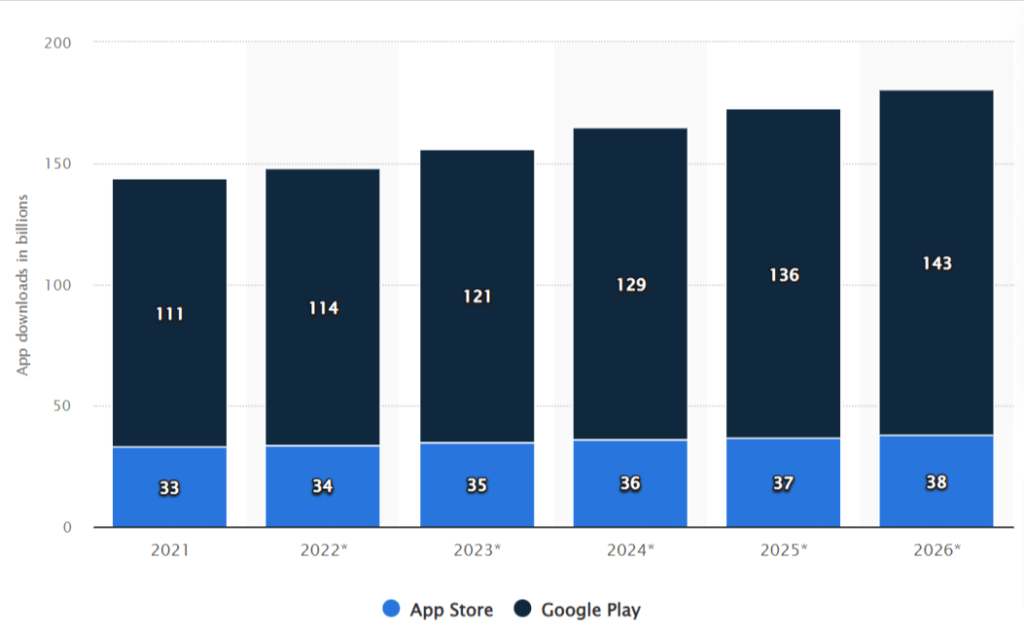Discover the top 8 mobile ad networks for publishers in our 2023 update. Find the perfect network to maximize your ad monetization and reach your target audience effectively.
Mobile devices have taken over the world in the last decade, with the number of internet users surpassing desktop users. The ad tech industry responded to this change by launching multiple mobile-specific ad networks.
In fact, according to Statista, by 2026, it is estimated that consumers will download a staggering 143 billion mobile apps from the Google Play Store. This represents a significant increase of nearly 30 percent compared to the 111 billion apps downloaded in 2021.
To address this growing need, we present an updated list of the top 8 mobile ad networks for publishers in 2023. These ad networks offer diverse features, targeting capabilities, and revenue opportunities, empowering publishers to maximize their ad monetization potential in the dynamic mobile advertising ecosystem.
But first, let’s understand what mobile networks are.
What is a Mobile Ad Network?
Mobile ad networks are the platforms where app developers (publishers) and advertisers connect. These platforms facilitate distributing and managing advertisements specifically designed for mobile devices. Using mobile ad networks, publishers, mainly app developers, can sell their ad inventory to buyers.
In other words, mobile ad networks serve as an intermediary between advertisers, who aim to promote their products or services, and publishers, who offer a mobile app or website inventory to display those ads.
Also Read – A Complete Guide to Mobile Ad Mediation Platforms (2023)
Why Should You Advertise on Mobile Apps?
A number of reasons abound when it comes to why one should opt for in-app mobile advertising. Many studies and research have conclusively demonstrated significant enhancements in publisher revenue and effective marketing for advertisers through in-app advertising.
Let’s delve into the data that attests to the power of mobile advertising.
- In-app ads perform 11.4 times better than banner ads on mobile websites (AppSavvy).
- 92% of Facebook’s ad revenue comes from mobile advertising (TechJurry).
- 89% of people are more likely to recommend a brand after a satisfactory mobile experience (Think With Google).
- 250 billion apps were downloaded in 2021, and this is expected to increase to nearly 300 billion by the end of 2023 (Statista).
All in all, combining these statistics and insights showcases the undeniable value and potential of in-app mobile advertising.
However, finding a reliable network can be challenging. Let’s take a look at a few mobile ad networks that publishers and developers regularly vouch for.
Top Mobile Ad Networks in 2023
There are plenty of mobile ad networks out there. As per Statista, the most popular is Google AdsMob, followed by its mediation adapters, Facebook audience network, and more. Let’s have a closer look at each of them.
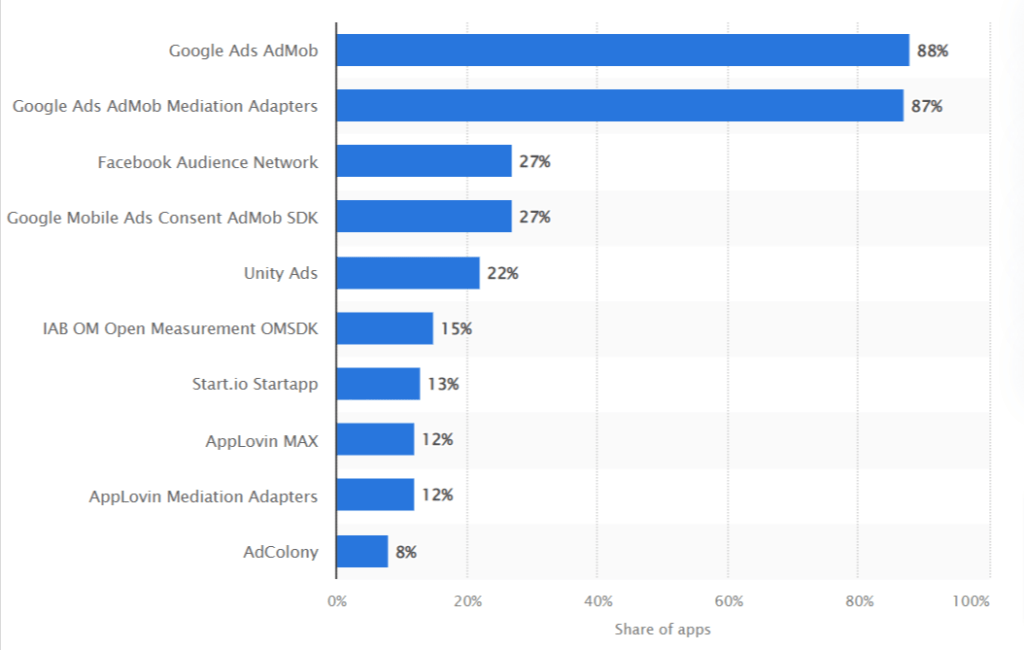
1. Media.net
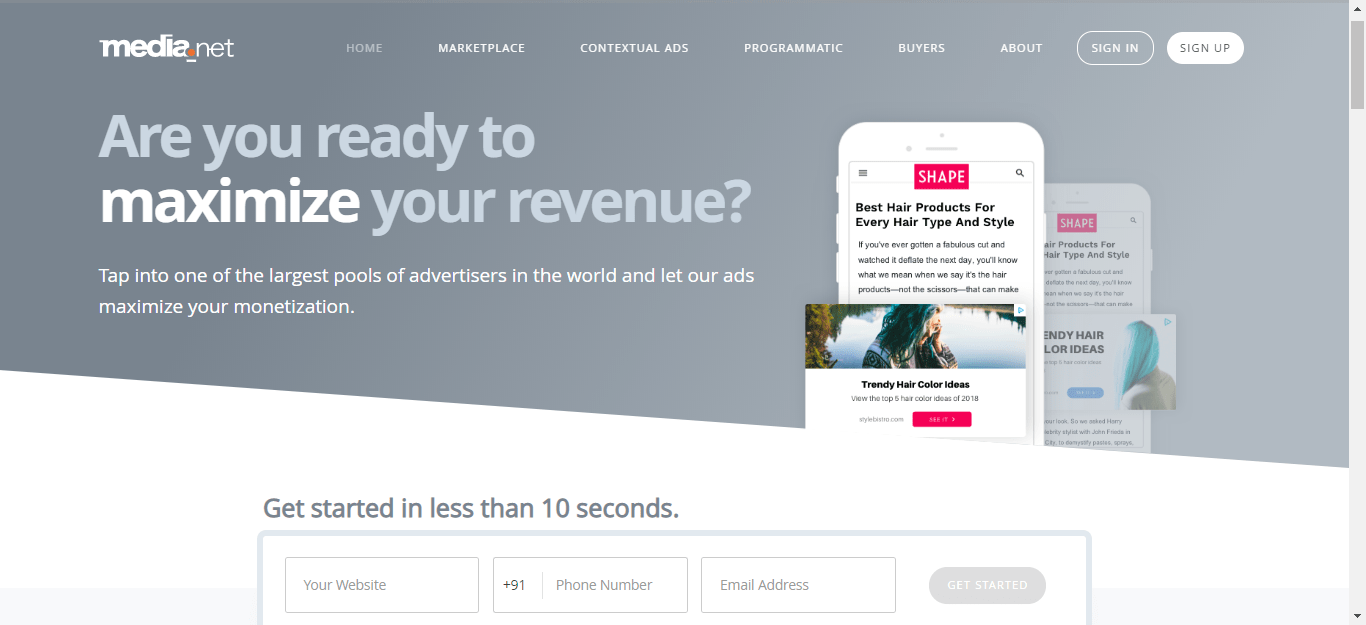
Media.net has one of the most comprehensive portfolios of advertising technology in the industry across search, display, mobile, native, local, products, and video.
Media.net is the original creator of the display-to-search (D2S) ad format, a highly sophisticated method of monetizing display placements by identifying user search intent and displaying relevant search keywords that lead to the display of search ads bought by advertisers on a cost-per-click (CPC) pricing model.
Advertisers have seen extremely high conversion/sales through this format without the risk of having to buy cost-per-thousand-impressions (CPM) based media where they run the risk of paying for media with which users did not engage.
Here are some unique benefits one can derive by running mobile ad units from Media.net:
- Competitive CPMs because the demand on mobile for search is nearly the same as desktops (and increasing!) and this drives the effective revenues significantly higher, vis-a-vis the conventional display demand from other ad providers, which is usually lower and limited in terms of dollar spends
- Mobile “in-content” units are responsive in nature and support all iOS and Android devices. This allows the publisher to monetize every impression, across all devices from a single ad provider source
- An already established trend with many mobile sites is that of “infinite-scroll”, where the content keeps loading as the user scrolls further down on a site. Mobile ads from Media.net are capable of being “docked” on the screen and thus remain in the viewable region all through
- Ad units are fully customizable to blend with the look, feel, and layout of a site, thus giving a far “native” experience, which enhances the experience than destroying it.
Earn an additional 10% revenue for the first three months with our partner Media.net by signing up here.
2. AdMob
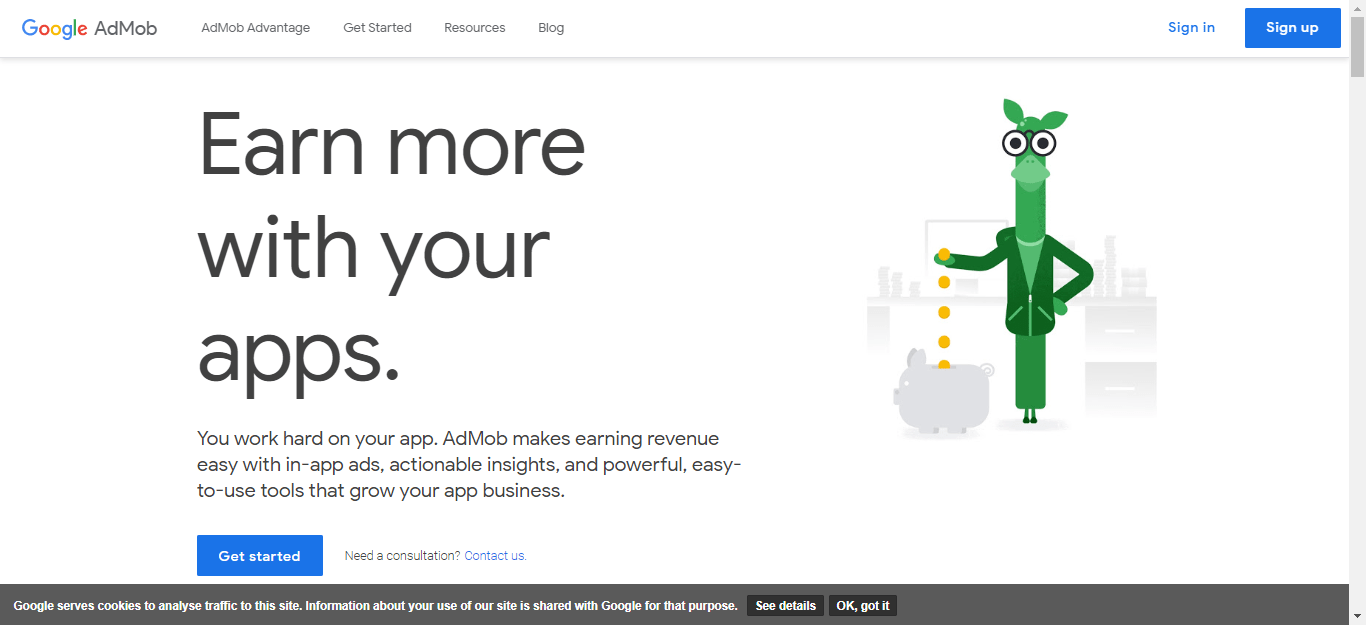
AdMob is one of the most popular mobile ad networks, which was founded in April 2006 as a mobile advertising platform. And later in November 2009, it was acquired by Google. AdMob offers advertising solutions for mobile platforms like Android, iOS, WebOS, Flash Lite, Windows phones, and all mobile web browsers.
In 2013, Google re-designed AdMob to make it AdSense for mobile publishers. And currently, AdMob claims to serve more than 40 billion mobile ads each month making it the world’s largest mobile ad network.
The demand is captured from Google Ads (formerly AdWords) accessing buyers from around the world. Ad formats are responsive and delivered with a seamless user experience. For applications, the ads are delivered during the nature breaks to maximize engagement and to reduce intrusion. Similarly, AdMob puts a great deal into user satisfaction while carefully building up the publisher’s revenue.
As with most Google products, you can expect near-flawless functionality and easy app integration. If you’re a beginner in the mobile advertising game, then there is no better starting point than AdMob.
On the downside, mobile ad network by AdMob has been criticized by users for revenues being on the lower side of the chart. This means that some of the other options on this list may be a better option for more experienced players seeking higher revenue.
Before you read about the next ad network, we’d like to do a little self-plug about ourselves too. Take a look at what AdPushup does and why we’re hand-picked by Google as a certified publishing partner.

AdPushup has helped more than 300 web publishers sustainably increase their ad CTRs, CPMs, and overall revenues without compromising on UX.
Take a look at how we delivered a 534% ad revenue uplift in 6 Months for CCNA7. If you want to learn how our technology can do the same for you, go ahead and request a demo.
3. StartApp
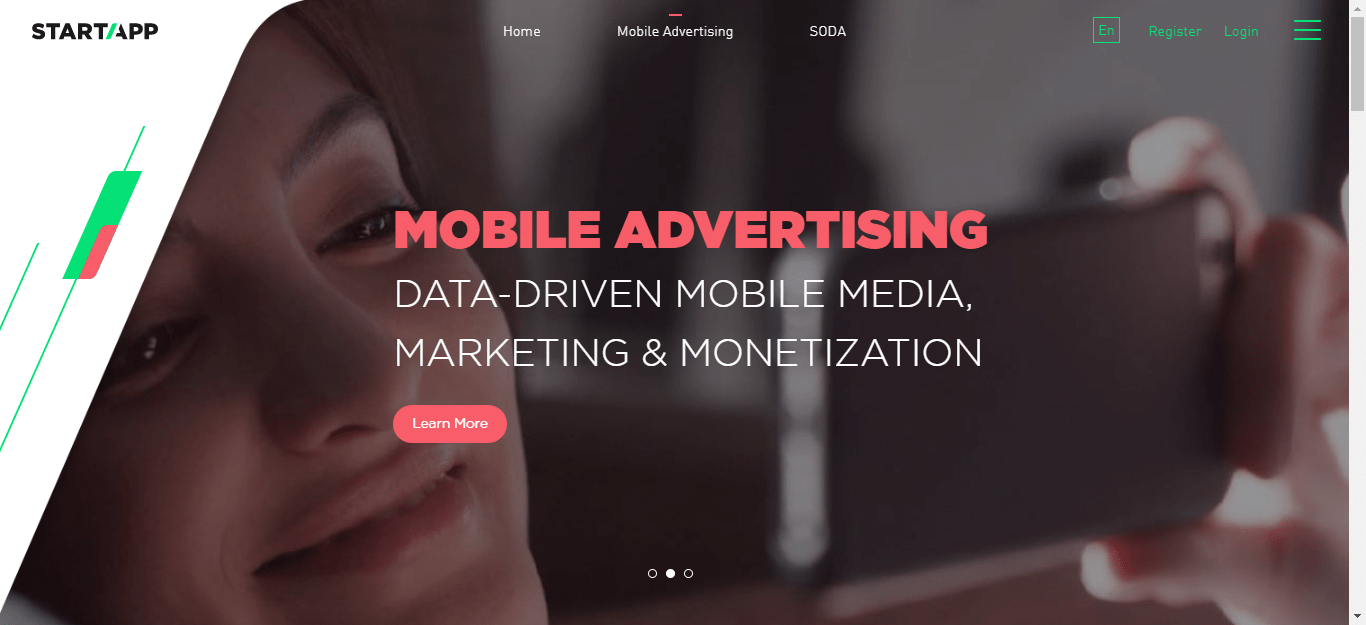
Next mobile ad network in the list, StartApp is an insight-driven mobile technology company that states to maximize the publisher’s eCPMs, fill rates, engaged users, and revenue. This is achieved by advanced data insight used by the company to channel ads via programmatic and direct deals.
StartApp allows you to implement interstitial advertising, which means that between two pages or sections of your website or mobile application, an advertisement momentarily takes over the screen.
It is considered to be a more intrusive form of advertising compared to traditional banner advertising, but some have achieved far higher revenue rates using interstitial advertising.
The company is partnered with Yandex, Oracle, Oath, and Baidu; and these businesses use StartApp’s technology and data solutions.
Also Read – Mobile Targeted Advertising: How they Help Boosting Your Ad Revenue
4. InMobi
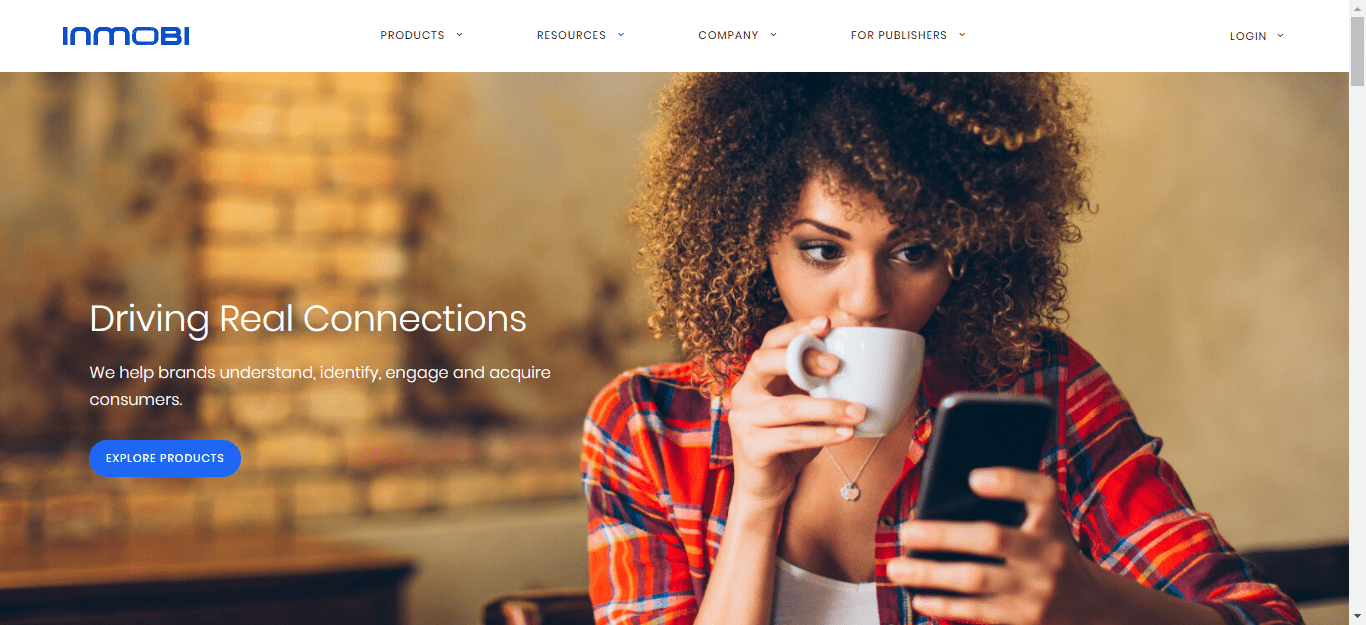
InMobi has developed a new way of targeting users which they call appographic targeting. Appographic targeting increases the chance of connecting users to the type of media and apps that they are most likely to consume. For instance, if a user is booking a flight via an app, then the ads for hotels and tourism services would appear on the user’s screen.
It does this by basing the targeting on the users’ existing and previous applications instead of traditional metrics such as demographics or geography.
Other than that, InMobi offers in-app monetization, ad mediation, and audience bidding for publishers. And for mobile inventory, it deals in display, native, and video ad formats. Currently, it’s working with large publishers like ABC, TMZ, BlackBerry, Pandora, and wattpad.
5. Flurry
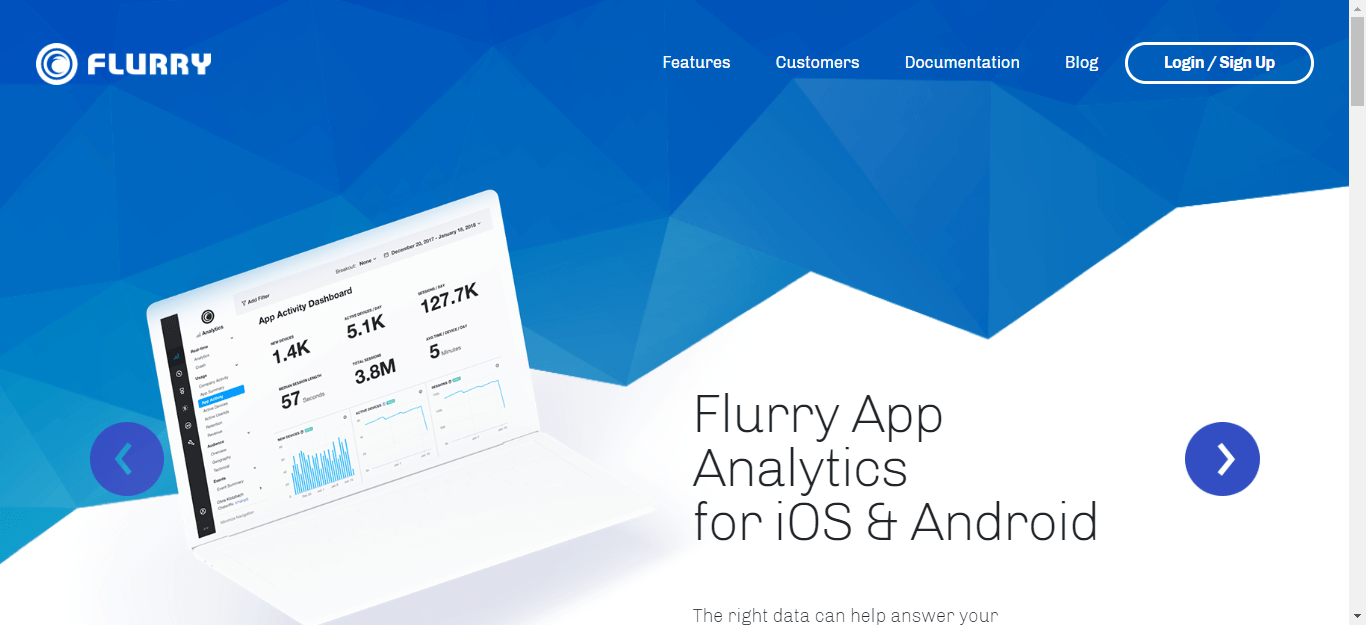
Flurry was acquired by Yahoo under Marissa Mayer’s reign in 2014. The analytics part of Flurry is something that is truly unique to them, with the ability for a developer or company to monitor a whole portfolio of applications distributed on different application stores across platforms.
Its funnels also measure customized consumer conversion metrics. You can also categorize the analytics that you gather, for example separating paid users from free users. Officially part of the Yahoo Developer Network and their App Publishing, Flurry shows great potential for high revenues with their extensive analytics features.
If you have the patience and the drive to optimize and test your ad campaigns over and over again, you can most certainly make some really interesting observations with Flurry.
6. Smaato
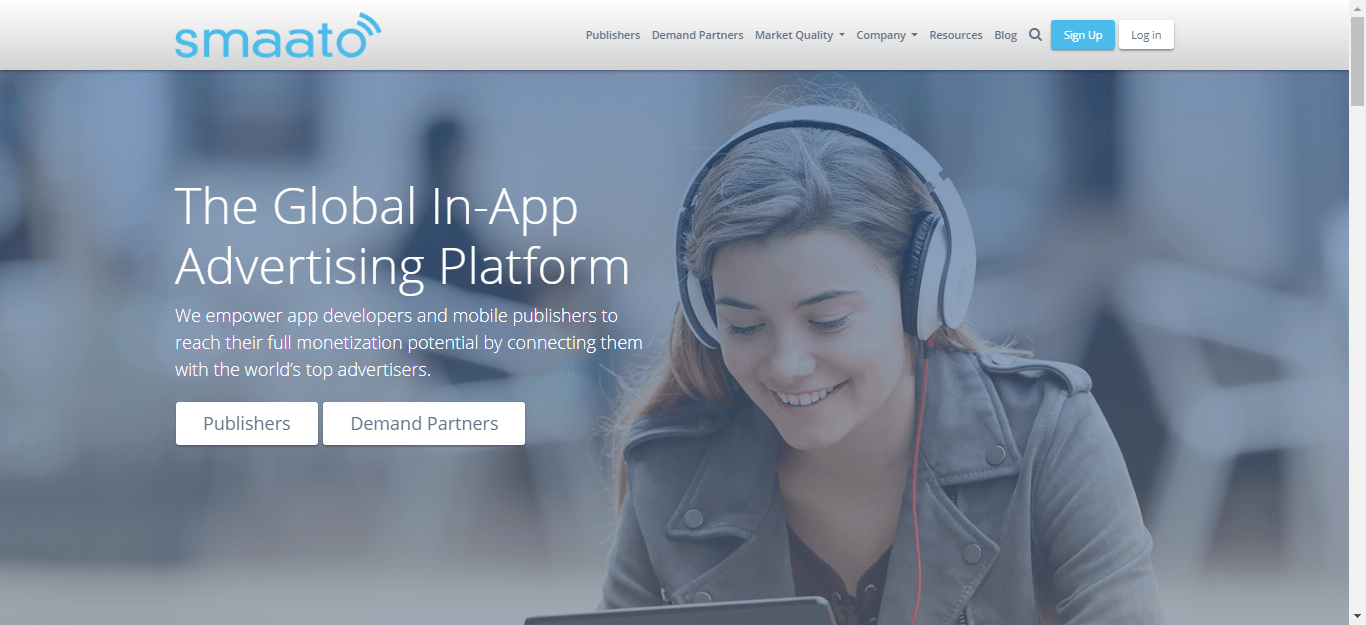
Smaato is another name that comes to mind when talking about real-time bidding and programmatic advertising. It’s a strong player when it comes to high revenues for developers of mobile apps and websites.
Smaato Publisher Platform offers a “Dynamic Demand” platform that enables per-impression competition for all advertising sources to maximize publisher revenue.
Smaato is connected to over 390 demand partners and their platform is free to integrate, so no real downsides exist in their application, and the revenue potential looks promising, given that you catch the fancy of the demand partners.
7. Chartboost
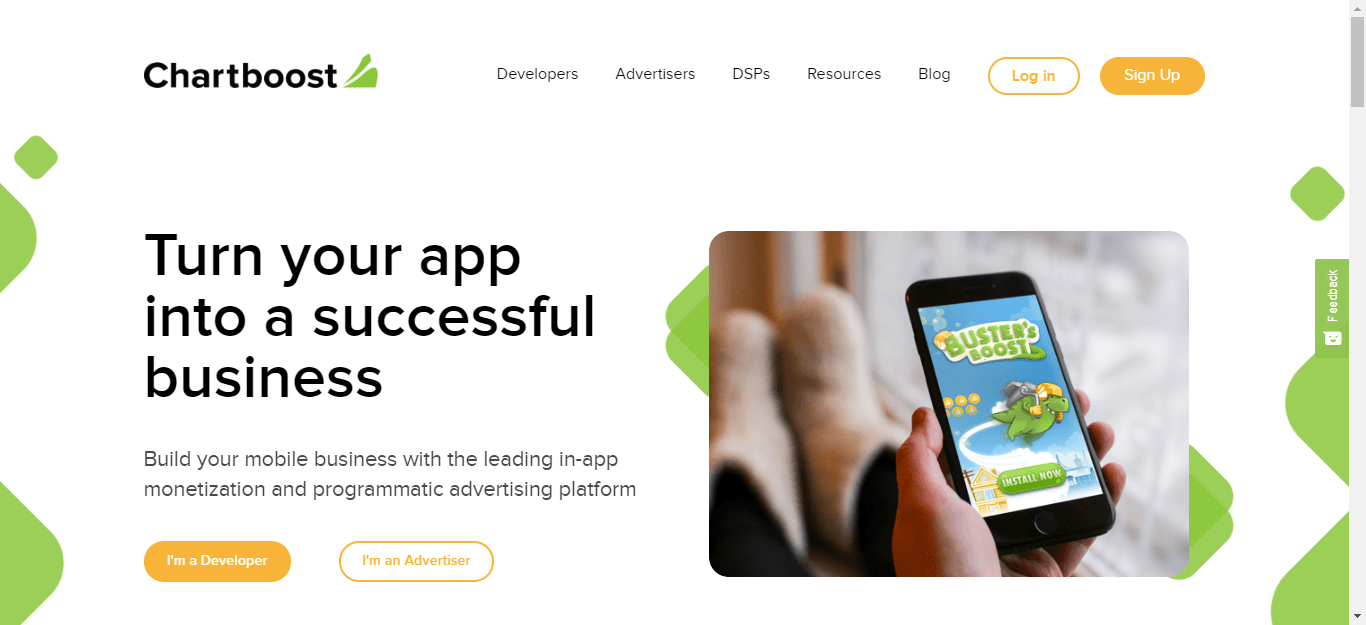
After you first strike gold with an app, you want to keep your current fan base aware of your new apps, which is why cross-promotion of your new apps in your existing applications is a powerful and popular solution for increasing downloads and profits. This is why Chartboost has gathered an impressive group of mobile game developers as its clients, ranging from the likes of Rovio to DirtyBit.
Chartboost excels in cross-promotion but also offers the most popular mobile-only ad platform for gaming apps. They state that they work with 90% of the developers of the top 10 grossing mobile games. If you are a game developer then Chartboost offers a lot of potential for your ad ventures. They promote the ability of their partnering developers to make intelligent decisions regarding their ad campaigns based on their transparent and data-driven platform.
Chartboost offers both interstitial and video ads and the integration has been made extremely simple; a single SDK suits all channels of ads. This means that five minutes and ten lines of code into using Chartboost, and you could be making money from their ads. The revenue share is one of the cornerstones of Chartboost’s advertising efforts. The developer gets to keep between 90% and 100% of the revenue, which is an astonishingly high figure. The only cost of using Chartboost is the 10% cut they charge you per transaction they handle on your behalf.
The amount of control they give you also deserves mention: Chartboost allows you to see who advertises in your app and gives you full control in deciding who is allowed to do so and who is not. Chartboost also publicizes a list of CPIs across the globe on its website, which supports its transparency policy. Ever since Apple penalized Tapjoy, Chartboost has been in the lead out of all the cross-platform promotion networks, and you can’t go wrong with it if you develop mobile games.
8. AdColony
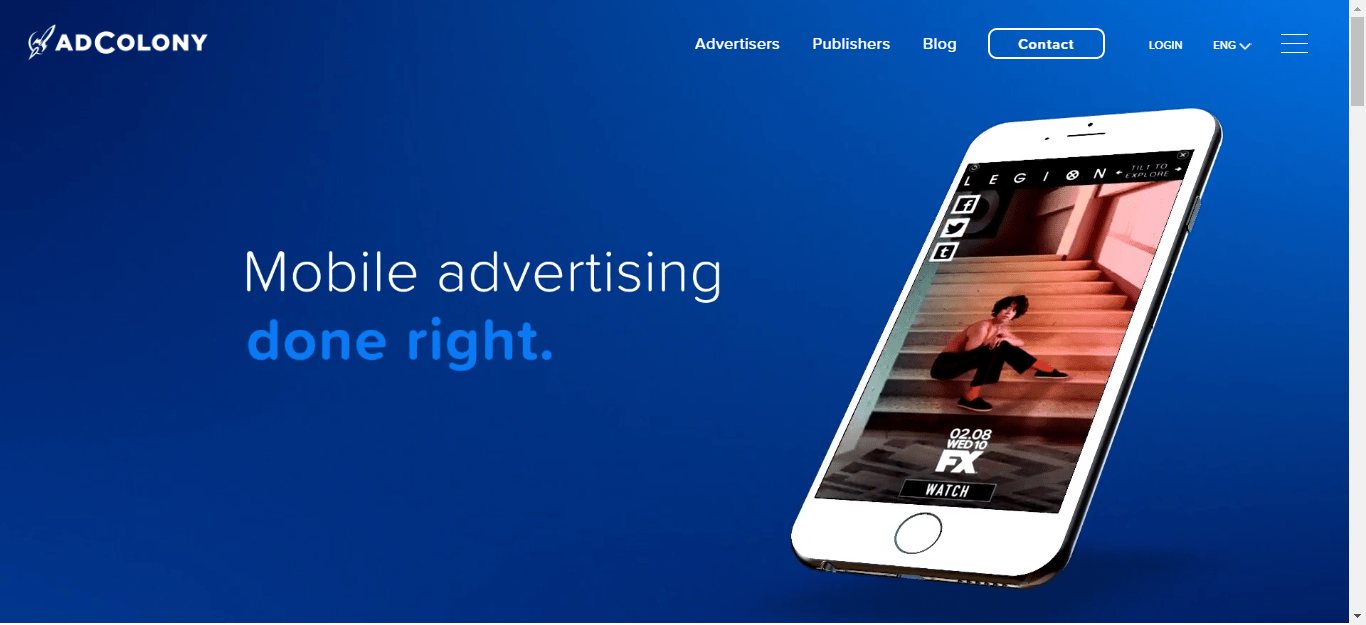
AdColony is one of the leading mobile advertising platforms. It is working with some of the top mobile publishers/developers like ABC News, Flixster, Glu, and History. The company claims to deliver creative ad creative by getting demands from global advertisers.
It supports cross-platform monetization via Android, iOS, and Windows platforms. Publishers can customize the text, font, and colors of the display creatives for better engagement. And in the case of video ads, it offers HD-quality creatives.
AdColony mainly works with the CPM model, however, it also supports other models like CPA, CPC, CPCV, and CPI. It follows a monthly payment cycle and payment is credited via check, ACH, PayPal, and Wire Transfer.
Factors You Should Consider While Choosing a Mobile Ad Network?
With all the available mobile ad networks out there, it can be pretty perplexing to choose one. To help eliminate this confusion, focus on what you need and how your needs fit that particular mobile ad network.
Find out which offers better targeting abilities, better quality graphics in multiple ad formats, better prices, and more. Let’s take a closer look.
Target Audience
Understand your target audience and ensure the ad network effectively reaches the desired demographic. Consider geographic location, age group, interests, and behavior to align your ads with the right audience.
Ad Formats
Evaluate the ad formats supported by the network. Determine whether they offer a variety of formats like banners, interstitials, native ads, or video ads to suit your campaign goals and engage users effectively.
Ad Quality and Relevance
Look for an ad network that emphasizes high-quality and relevant ads. Ensure the network maintains strict standards to deliver ads that align with your brand image and resonate with your target audience. It’s because it ultimately helps drive higher engagement and conversions.
Targeting Capabilities
Assess the network’s targeting capabilities, including demographic, contextual, device, or behavioral targeting options. Robust targeting options allow you to refine your audience reach and deliver tailored ads to the right users at the right time.
Performance and Metrics
Consider the ad network’s track record and performance metrics. Evaluate key performance indicators (KPIs) such as click-through rates (CTR), conversion rates, viewability, and overall campaign performance to gauge the effectiveness of the network in delivering desired results.
Ad Inventory and Fill Rate
Examine the network’s ad inventory size and availability across different platforms and regions. Additionally, consider the network’s fill rate, which indicates the percentage of ad requests successfully filled with ads. A higher fill rate ensures maximum ad monetization opportunities.
Revenue Model and Payments
Understand the revenue model offered by the ad network, whether it’s based on CPM (Cost per Thousand Impressions), CPC (Cost per Click), or CPI (Cost per Install). Also, review the payment terms, frequency, and minimum payout thresholds to ensure they align with your financial goals and expectations.
You may also like to know: Top 10 Strategies to Boost Your Mobile Ad Revenue
Conclusion
Features such as analytics and control panels are standards for mobile ad networks today, but you should compare the differences between them, as all platforms do some things better than others.
The networks listed here are reliable networks that handle billions of ad impressions every month.
Also read: The Top Mobile Ad Sizes and Formats to Increase Ad Revenue
Whichever network you choose to go with, just remember that you can always switch to a different network if you are not 100% satisfied with your initial choice. These networks are highly competitive, and thus changing from one network is made as easy as possible, with SDKs that are extremely easy to integrate.
Testing between two or three networks is also a smart decision to make in a situation where you are uncertain of the best network to deploy for your app.
Choosing the right network for your application is not an easy task, but hopefully, this list of nine best mobile ad networks makes it a little easier for you.
Frequently Asked Questions on Mobile Ad Networks
Mobile ad networks are platforms that connect advertisers and publishers in the mobile advertising ecosystem. They facilitate the buying and selling of mobile advertising space, enabling advertisers to reach their target audience through mobile apps and websites.
Google AdMob is a popular example of a mobile ad network. It connects advertisers with app developers and publishers, offering various ad formats and targeting options to reach the target audience on mobile apps and websites.
According to Statista, the most popular and one of the largest mobile ad networks is Google Ads Admob.

Deepak has a keen eye for detail and a deep understanding of the ad tech landscape. Whether it’s through in-depth articles, thought-provoking insights, or compelling storytelling, he’s dedicated to helping people navigate the complex world of ad tech with the simplicity of his words.

